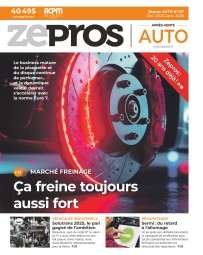
Argentina: A potential recovery after a bout of austerity

When Javier Milei assumed power in November 2023, the country’s inflation had spiralled out of control, surpassing 25% monthly. The President then devalued the peso upon taking office. A year later, inflation has dropped below 3%.
This was not however without its challenges, including budget cuts in education and healthcare, layoffs among civil servants, and the abandonment of significant projects. The budgetary austerity measures resulted in a rapid decline in inflation and were accompanied by a recession projected to be -3.5% in 2024 by the IMF. Moreover, more than half of Argentines, approximately 23 million people, live below the poverty line. Florencia Delucchi, director of GiPA Argentina, estimates a 9% decline in the aftermarket market. "The drop in new vehicle sales, even more pronounced than last year, should have boosted the car maintenance market. But after the high inflation, Argentine consumers simply have no more money".
Alternative offers on the rise
Mechanically, the 11 million vehicles on the road, including many locally produced pick-ups, have aged rapidly. In just one year, from 2023 to 2024, their average age has increased from just over 10 years old to 12 years old. Notably, sales of new vehicles between 2009 and 2011 have significantly contributed to the rise in the percentage of 12 and 15-year-old cars on the road. So, there’s a favourable wind for the IAM sector, which dominates the aftermarket market with an 86% share and poses a challenge to branded networks. Faced with a smaller number of younger vehicles, these networks are attempting to compensate by targeting older vehicles. They’re also trying to prevent motorists from extending their maintenance intervals - the average annual mileage, influenced by the rise in fuel costs, has decreased by 10% to 11,000 km. To achieve this, they’re developing services, particularly payment facilities. They were also able to make a difference in the availability of spare parts, which is always very complicated in IAM while the manufacturers' factories produce them for the domestic market," says the director of GiPA Argentina.
The latest move by manufacturer networks is the increasing visibility of offers from their parts brands, such as Motrio, Motorcraft, or Mopar/Eurorepar. “While these offers may not represent large volumes currently, the structure of the parts market favours them”, says Florencia Delucchi. It’s worth noting that economic difficulties have also led to a rise in demand for second-hand products, including car spare parts and even tyres.
Will 2025 be a year of recovery?
With this new ultra-liberal government, the Argentine market is opening up. With controlled inflation and shortened payment terms, now authorised in dollars, imports should start to rise again. This means favourable conditions for the arrival of new car brands – particularly Chinese – keen to find new outlets, but also for spare parts manufacturers. GiPA Argentina’s director explains that “they are potentially able to address the primary concern of Argentine consumers: providing or maintaining their mobility at a reduced cost.” This could potentially lead to a demand for other equipment manufacturers, or even ITGs, which have had limited presence until now. Consequently, independent spare parts may regain control after months of instability. “2025 could be synonymous with opportunities for aftermarket players in Argentina,” hopes Florencia Delucchi.






